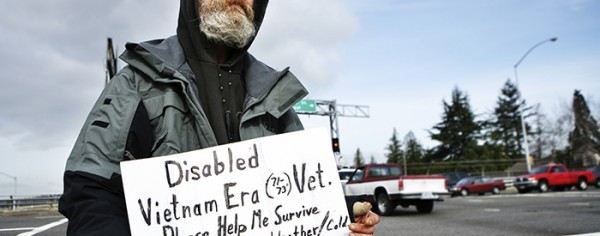Information and Perspectives on Rural Homelessness in the Commonwealth of Pennsylvania:
Rural homelessness is little recognized in the United States where most of the attention is focused on homeless people in cities. A reason for that is that some of the urban homeless are visible, living on the streets or spending time in well-established homeless shelters. Statistics on the number of homeless people come mostly from Point in Time (PiT) surveys where workers for social agencies that serve the homeless spend one day counting homeless people who reside in shelters and who also live on the street in well known locations.
Rural homeless people are much harder to count because they may be squatting in abandoned buildings, camping out, or living outside in unknown and widely distributed locations. Rural homeless people also may be part of extended family networks and long-term friendships that allow them to “couch surf”, staying with agreeable friends until they must move on to live with another social connection. These people are generally not visible and also by official definitions they usually are not counted as homeless. Yet in rural areas, the couch surfing pattern is common.
This Web page is based on a report to the Center for Rural Pennsylvania by Heather S. Feldhaus, Ph.D., and Avi Slone of the Bloomsburg University Sociology Department titled “Homelessness in Rural Pennsylvania” (March 2015). You can access the report by clicking here (button). One of their major point is that counting or measurement of the homeless is unreliable and unsystematic, and because they detail these data problems the “meat” of the report is a bit hard to find. Our purpose here is to summarize key findings.
Key Findings:
Rural homelessness is probably more common and more severe than urban homelessness, and it appears to be growing in frequency. In North Central Pennsylvania an important cause of increased homelessness is gas drilling related to the Marcellus Shale deposit that has brought high paid workers into the area and driven down vacancy rates and driven up prices. Homelessness also is related to persistent and growing unemployment and the fact that if people find jobs transportation may not be available so they cannot travel between home and work.
Overall, patterns of homelessness for people living in urban and rural areas are quite similar according to available federal and state data. However, Feldhaus and Slone demonstrate that the rural homeless are probably undercounted by a factor of 100% to 200%. Working with social service agency allies they were able to identify and count specific homeless people in Bradford and Columbia Counties and then to compare those numbers to official statistics from the Census and from state data sources. Since Columbia County is not included in state data sources there is no baseline but in Bradford County identified homeless individuals were much more common than in the state database. Although Columbia County had no baseline, the number of homeless people they located was dramatically larger than the number of rural homeless people that state has identified in similar locations.
Feldhaus and Slone are part of a regional effort by social service agencies to use a common data form and to carefully count the number of homeless people agency staff encounter. One of the problems with data on the homeless is that definitions and data collection forms vary widely across geographical locations and across social service industries. For this reason even though a large amount of data seems to be collected by social services agencies it is mostly not comparable and cannot be added together to form comprehensive counts. The Central Pennsylvania Homeless Coalition, centered in Columbia and Montour Counties is attempting to remedy this problem with its careful counting methodology and our hope is to extend this data collection form to social service agencies in Northumberland, Snyder, Union, and Lycoming Counties.
Link to Full Report:
http://www.rural.palegislature.us/documents/reports/homelessness-2015.pdf
